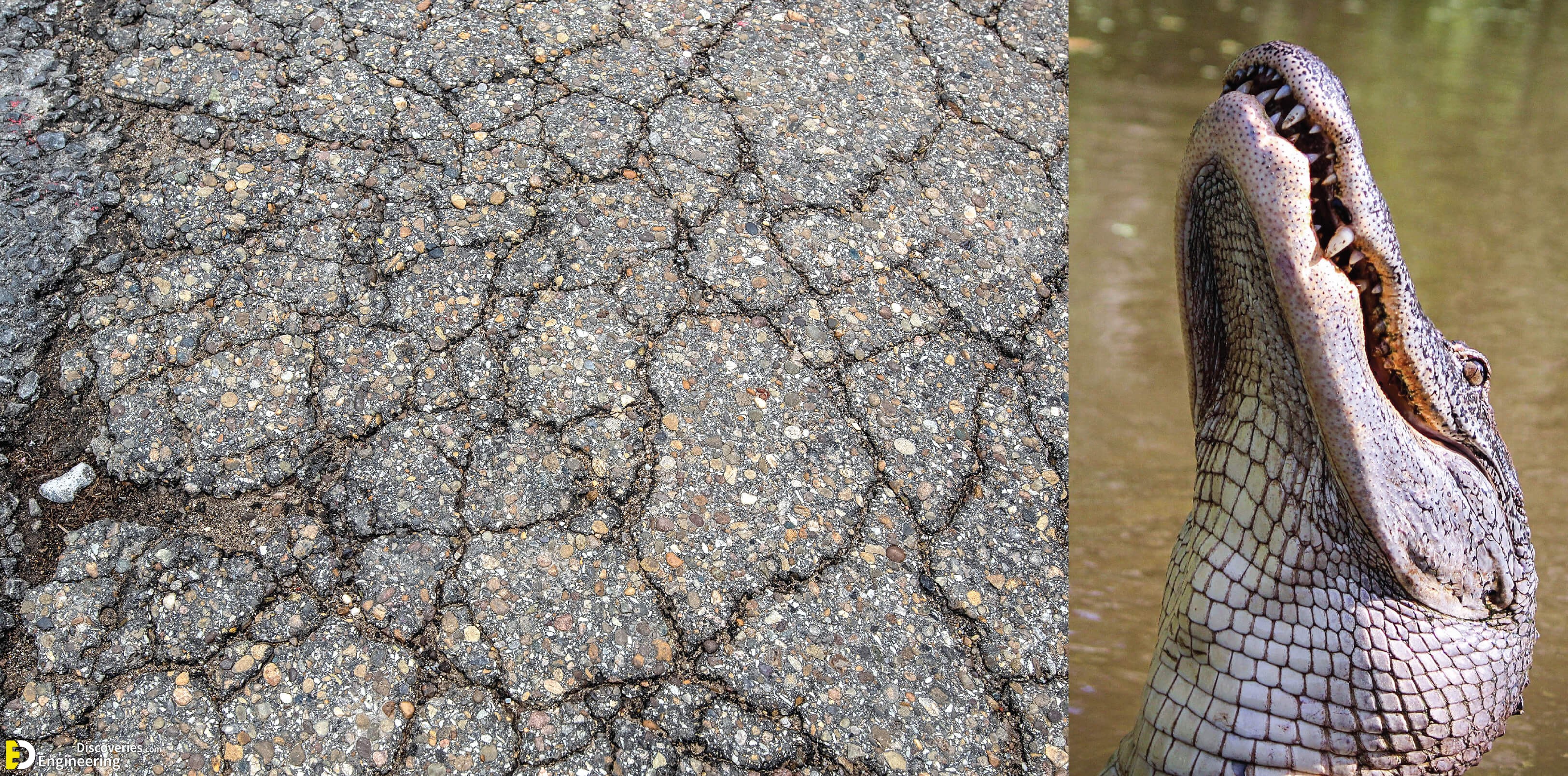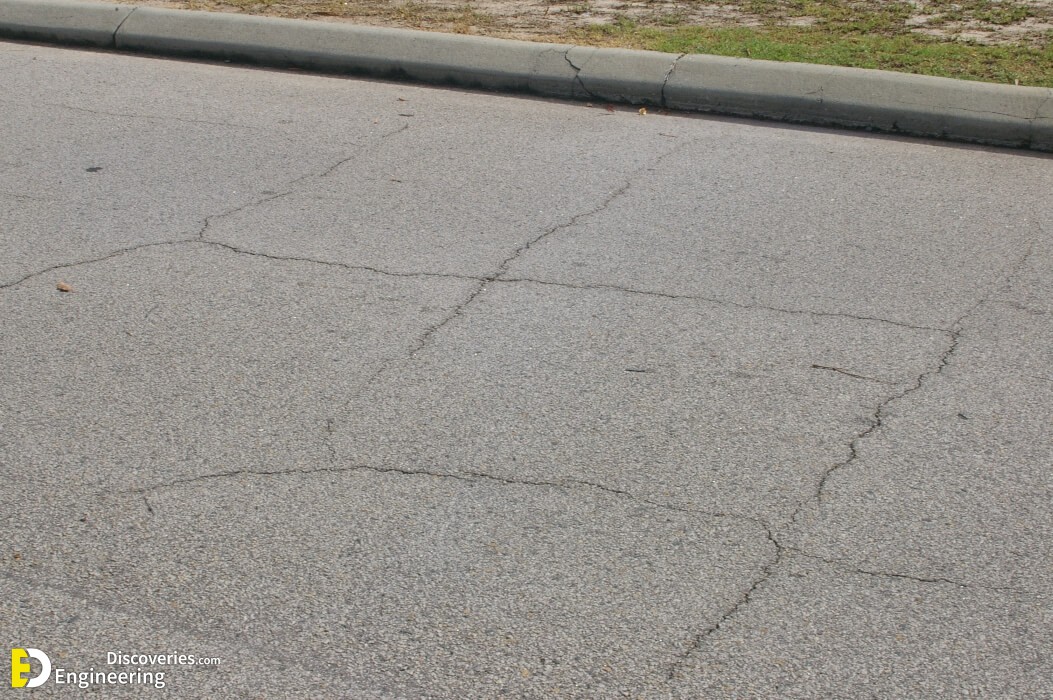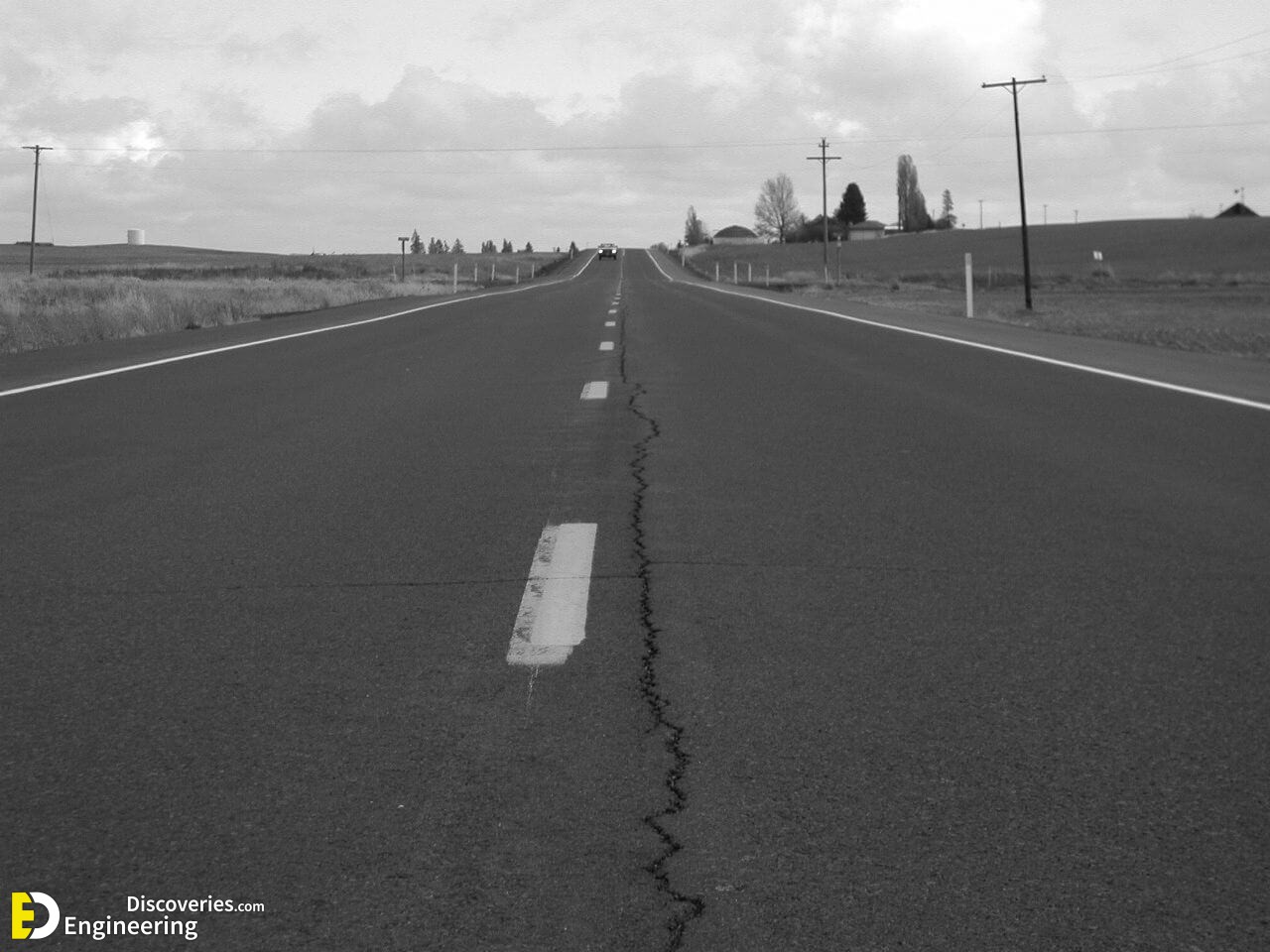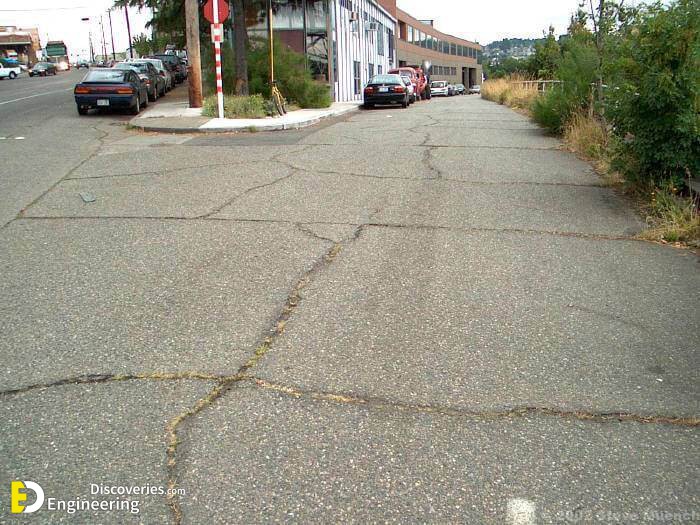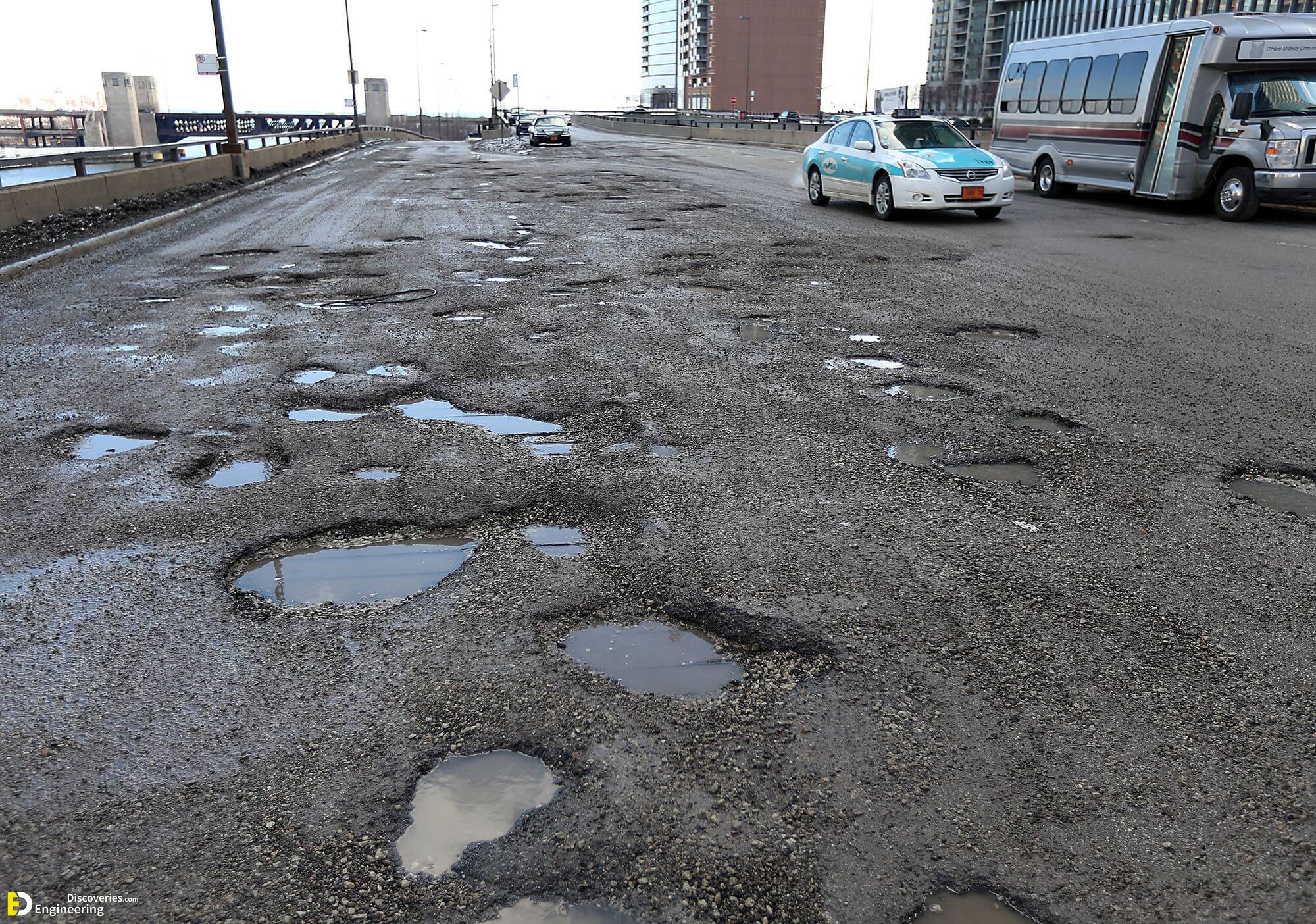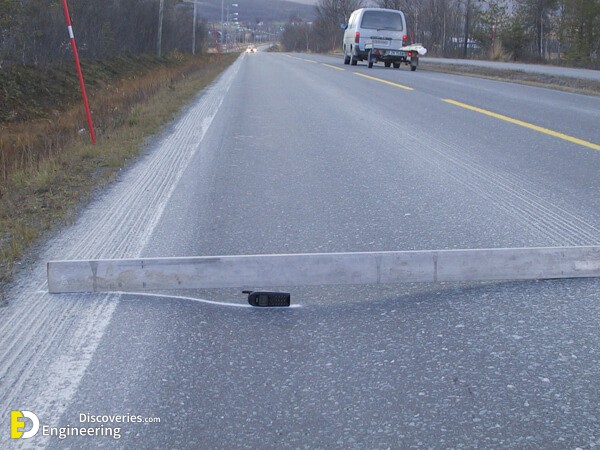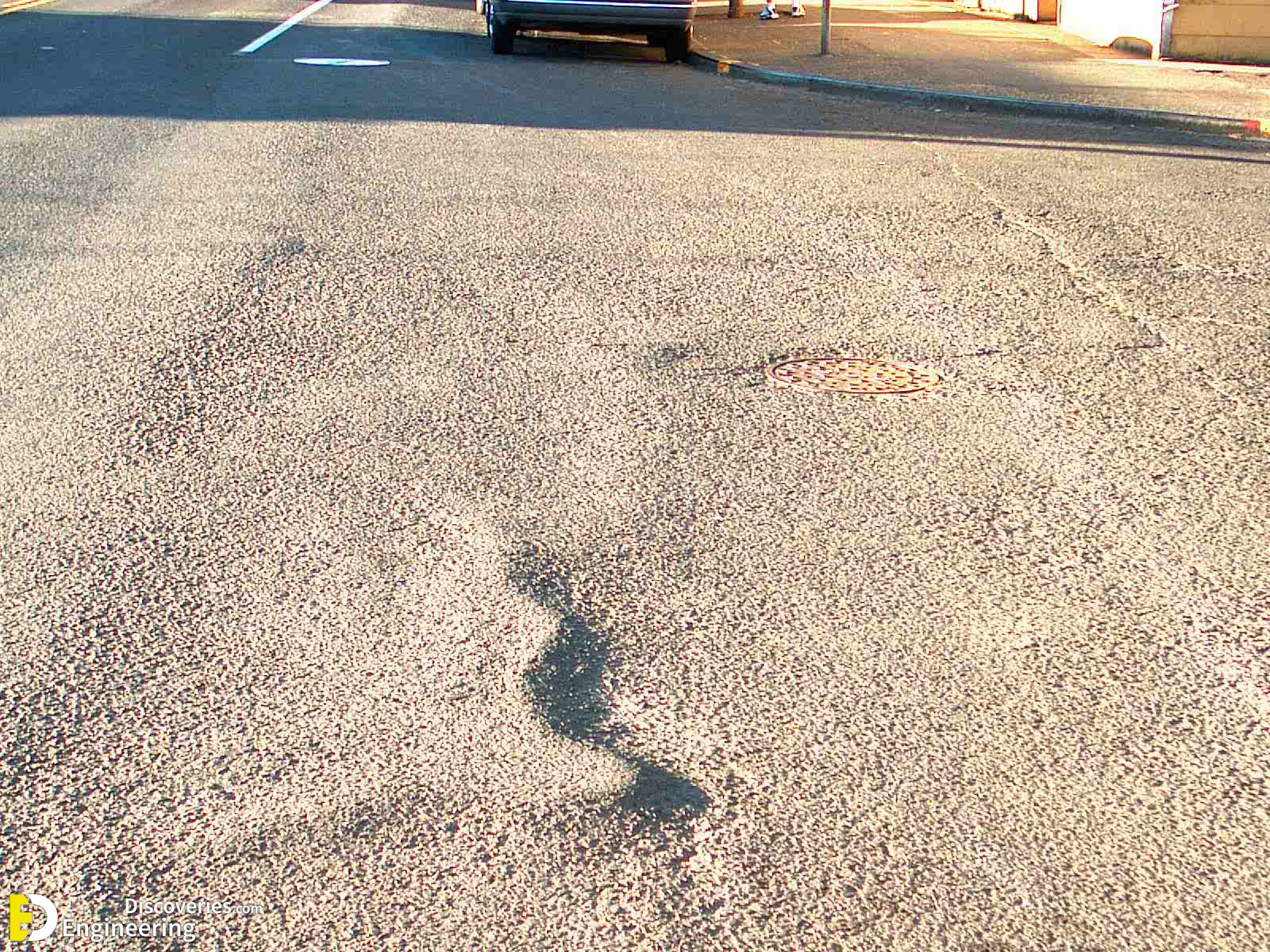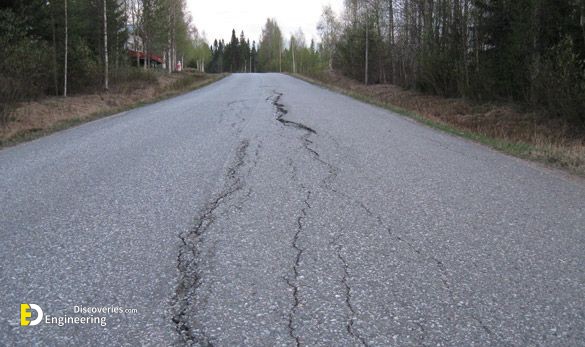Fix
Block cracks look like large interconnected rectangles (roughly). Block cracking is not load-associated, but generally caused by shrinkage of the asphalt pavement due to an inability of asphalt binder to expand and contract with temperature cycles. This can be because the mix was mixed and placed too dry; Fine aggregate mix with low penetration asphalt and absorptive aggregates; poor choice of asphalt binder in the mix design; or ageing dried out asphalt.
Fix
Less severe cracks measuring 1/2 inch or less can be sealed to prevent moisture from entering into the subgrade. More severe cracks should be fixed by removing the cracked pavement layer and replacing it with an overlay.
3- Longitudinal (Linear) Cracking
Longitudinal cracking is cracking that are parallel to the pavements centerline or laydown direction. These can be a result of both pavement fatigue, reflective cracking, and/or poor joint construction. Joints are generally the least dense areas of a pavement.
Fix
Less severe cracks measuring 1/2 inch or less can be sealed to prevent moisture from entering into the subgrade. More severe cracks should be fixed by removing the cracked pavement layer and replacing it with an overlay.
4- Transverse Cracking
Transverse cracks are single cracks perpendicular to the pavement’s centerline or laydown direction. Transverse cracks can be caused by reflective cracks from an underlying layer, daily temperature cycles, and poor construction due to improper operation of the paver.
FIX:
Less severe cracks measuring 1/2 inch or less can be sealed to prevent moisture from entering into the subgrade. More severe cracks should be fixed by removing the cracked pavement layer and replacing it with an overlay.
5- Edge Cracks
Edge Cracks travel along the inside edge of a pavement surface within one or two feet. The most common cause for this type of crack is poor drainage conditions and lack of support at the pavement edge. As a result, underlying base materials settle and become weakened. Heavy vegetation along the pavement edge and heavy traffic can also be the instigator of edge cracking.
Fix
The first step in correcting the problem is to remove any existing vegetation close to the edge of the pavement and fix any drainage problems. Crack seal/fill the cracks to prevent further deterioration or remove and reconstruct to full depth fixing any support issues.
6- Joint Reflection Cracks
These are cracks in a flexible pavement overlay of a rigid pavement (i.e., asphalt over concrete). They occur directly over the underlying rigid pavement joints. Joint reflection cracking does not include reflection cracks that occur away from an underlying joint or from any other type of base (e.g., cement or lime stabilized).
Fix
For less severe cracks (less than 1/2 inch) crack sealing will prevent the further entry of moisture into the subgrade. If the cracks are more severe the removal of the cracked pavement layer followed by an overlay may be required.
7- Slippage Cracks
Slippage cracks are crescent-shaped cracks or tears in the surface layer(s) of asphalt where the new material has slipped over the underlying course. This problem is caused by a lack of bonding between layers. This is often because a tack coat was not used to develop a bond between the asphalt layers or because a prime coat was not used to bond the asphalt to the underlying stone base course. The lack of bond can be also caused by dirt, oil, or other contaminants preventing adhesion between the layers.
Fix
All of the areas exhibiting the “stretch marks” will need to be removed and will require a partial or full depth patch.
8- Pot Holes
Small bowl-shaped depressions in the pavement surface that penetrate all the way through the asphalt layer down to the base course. They generally have sharp edges and vertical sides near the top of the hole. Potholes are the result of moisture infiltration and usually the end result of untreated alligator cracking. As alligator cracking becomes severe, the interconnected cracks create small chunks of pavement, which can be dislodged as vehicles drive over them. The remaining hole after the pavement chunk is dislodged is called a pothole.
Fix
Full depth replacement patch.
9- Depressions (bird baths)
Depressions are localized pavement surface areas with slightly lower elevations than the surrounding pavement. Depressions are very noticeable after a rain when they fill with water.
Fix
Depending on the severity of the depression the asphalt may have to be removed and replaced (severe). Less severe depressions can be fixed by applying a thin surface patch or infrared patch.
10- Rutting Cracks
Ruts in asphalt pavements are channelized depressions in the wheel-tracks. Rutting results from consolidation or lateral movement of any of the pavement layers or the subgrade under traffic. It is caused by insufficient pavement thickness; lack of compaction of the asphalt, stone base or soil; weak asphalt mixes; or moisture infiltration.
Fix
If rutting is minor or if it has stabilized, the depressions can be filled and overlaid. If the deformations are severe, the rutted area should be removed and replaced with suitable material.
Problem
Roughness
Possible Causes
Usually caused by traffic action (starting and stopping) combined with
1- An unstable (i.e. low stiffness) HMA layer (caused by mix contamination, poor mix design, poor HMA manufacturing, or lack of aeration of liquid asphalt emulsions)
2- Excessive moisture in the subgrade.
Fix
A heavily corrugated or shoved pavement should be investigated to determine the root cause of failure. Repair strategies generally fall into one of two categories
1- Small, localized areas of corrugation or shoving. Remove the distorted pavement and patch.
2- Large corrugated or shoved areas indicative of general HMA failure. Remove the damaged pavement and overlay.
12- Upheaval Cracks
Upheaval is a localized upward movement in pavement due to swelling of the subgrade. This can be due to expansive soils that swell due to moisture or frost heave (ice under the pavement).
Fix
Full depth patch.
13- Raveling (very porous asphalt)
Raveling is the on-going separation of aggregate particles in a pavement from the surface downward or from the edges inward. Usually, the fine aggregate wears away first and then leaves little “pock marks” on the pavement surface. As the erosion continues, larger and larger particles are broken free and the pavement soon has the rough and jagged appearance typical of surface erosion. There are many reasons why raveling can occur, but one common cause is placing asphalt too late in the season. This is because the mixture usually lacks warm weather traffic which reduces pavement surface voids, further densification, and kneading of the asphalt mat. For this reason raveling is more common in the more northern regions(snow belt).
Fix
Apply a thin hot-mix overlay. Other solutions could include: sand seal, chip seal, slurry seal or micro-surfacing.
Other issues that need treatment before maintenance
Oil Spots – oil spots are a common problem in parking lots and driveways. These areas must be treated before seal coating or the oil and chemicals will seep up through the newly applied material and render your sealed surface ineffective. There is the number of great products for treating these types of issues. Ask your material supplier what they offer. Grass – Poorly maintained parking lots will often have grass growing up through the cracks. Cleaning the cracks should be standard practice before sealing them. Use a heat lance to burn out the crack and/or blow out the cracks depending on the severity of the problem. Mud, tree sap, berry stains, etc – Anything that would sit between the asphalt and the sealer must be removed. Without removing it the sealer can not properly adhere to the asphalt and will eventually (sooner than later most likely) peel off. Blowers, push brooms, pressure washers, and gas powered brooms are all tools you should have in your pavement maintenance arsenal.


